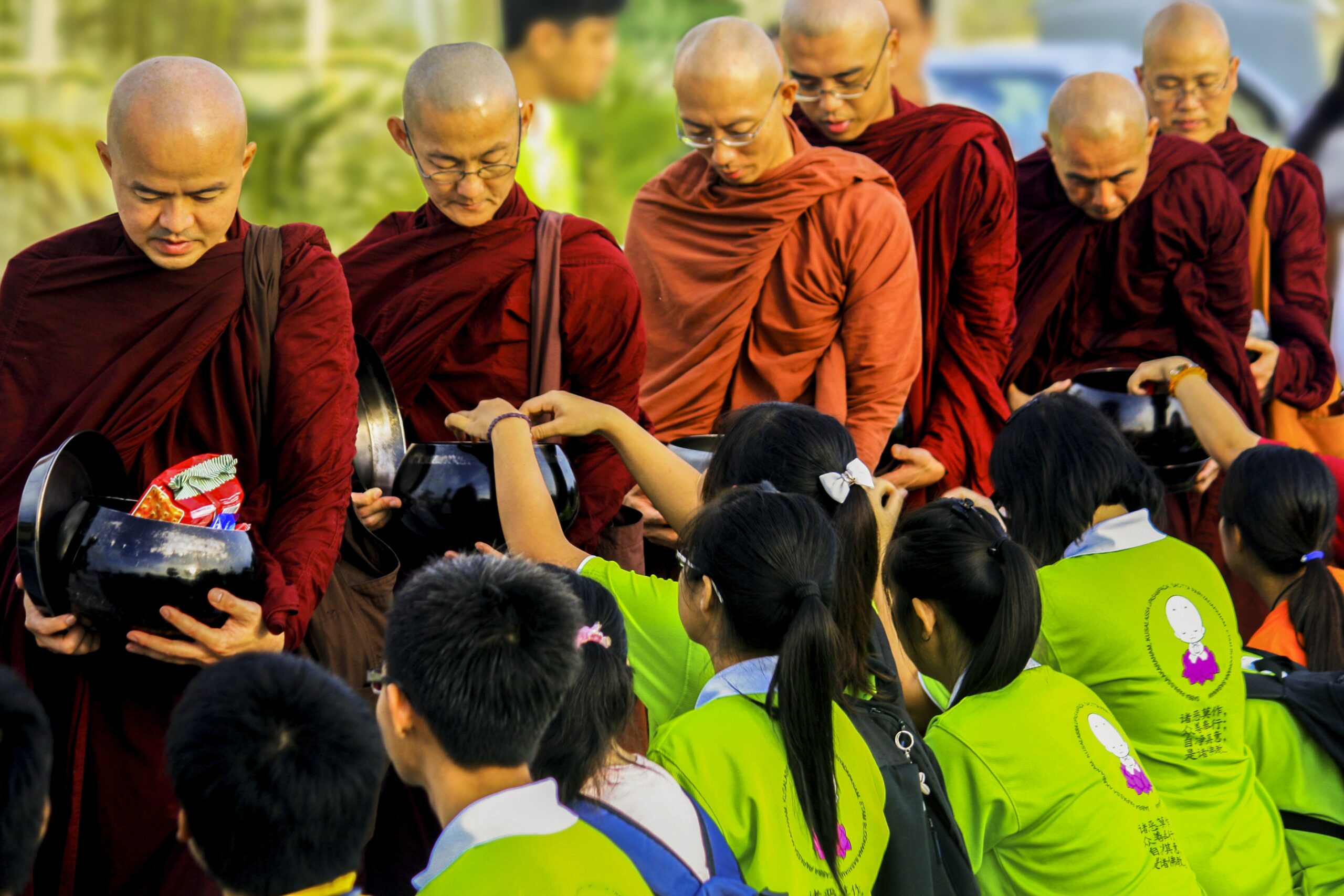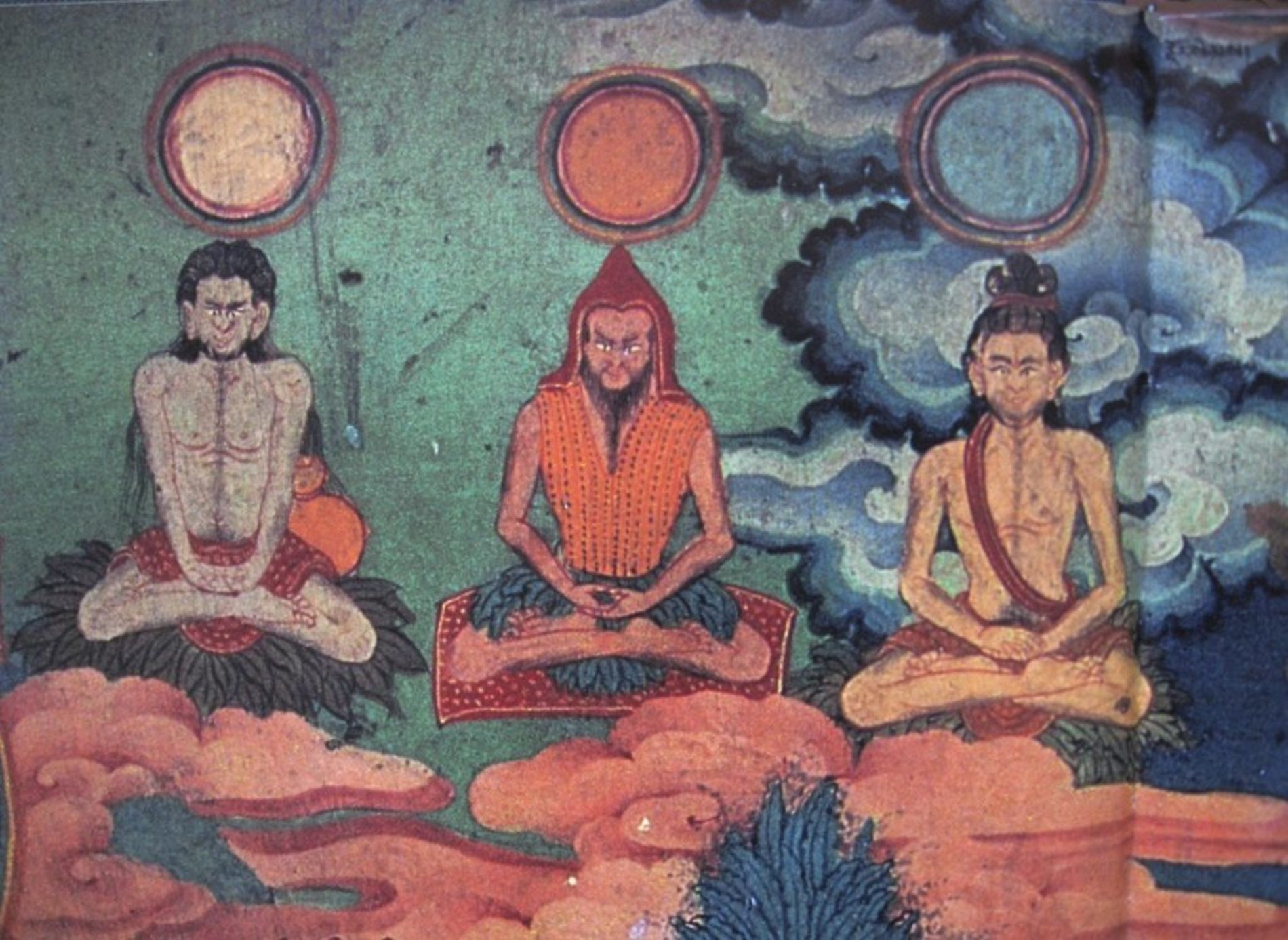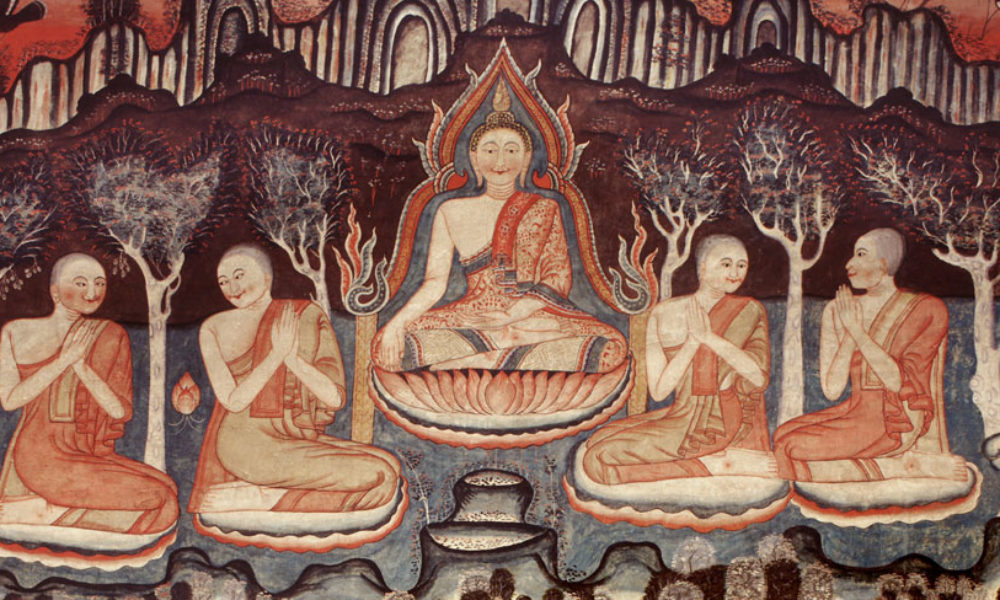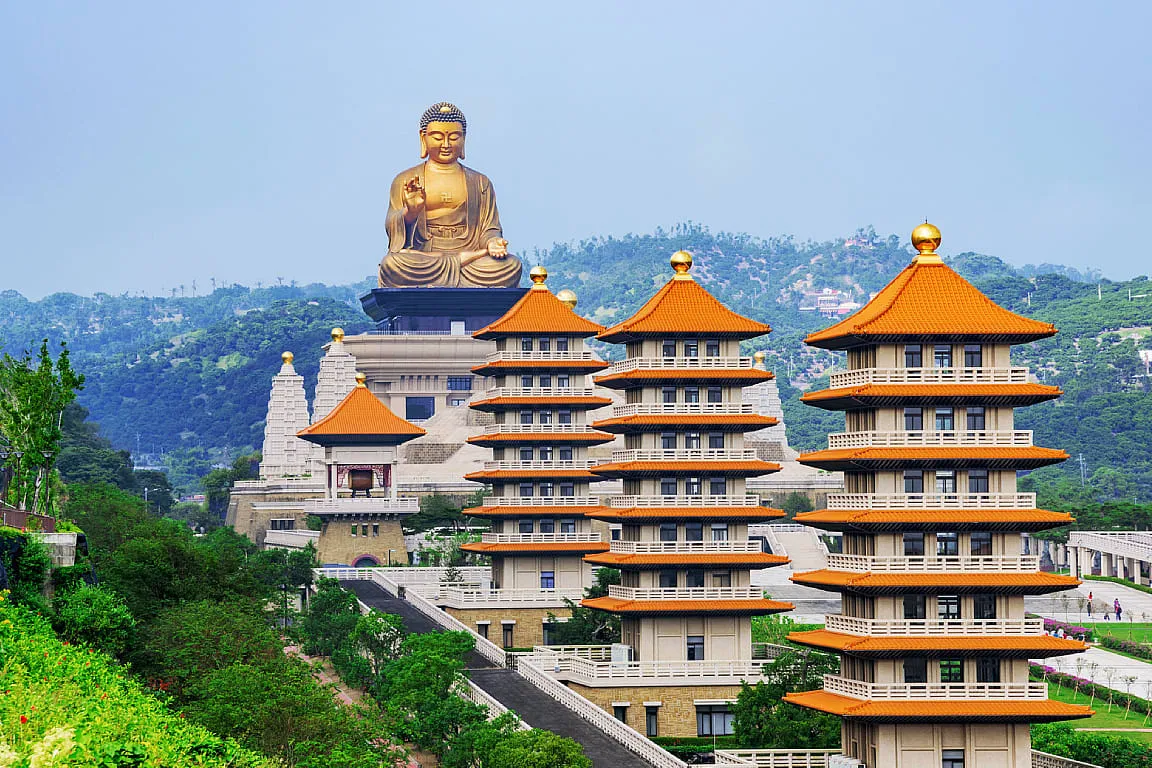Monasticism is a cornerstone of Buddhist practice, embodying the commitment to spiritual cultivation and ethical living.
Across various schools of Buddhism, monks dedicate their lives to the pursuit of enlightenment and the service of others. Each tradition has its own set of rules, rituals, and practices that shape the life of a monk, contributing to the rich tapestry of Buddhist culture and heritage.
Theravada Buddhism
Theravada Buddhism, the “Way of the Elders,” upholds the teachings of the Pali Canon and emphasizes the path to enlightenment through individual effort and realization. Monastic life in Theravada tradition is characterized by strict adherence to the Vinaya rules, which govern every aspect of a monk’s existence. Bhikkhus lead a simple, austere life, focusing on meditation, study, and ethical conduct. Each morning, they embark on alms rounds, receiving offerings of food from the lay community. The saffron-colored robes worn by Theravada monks symbolize their commitment to the path of liberation. Their monasteries, or viharas, serve as centers of learning and meditation, providing a supportive environment for spiritual growth and practice. Theravada monks dedicate themselves to the pursuit of Nibbana, or Nirvana, and play a vital role in preserving and transmitting the Buddha’s teachings to future generations.
Mahayana Buddhism
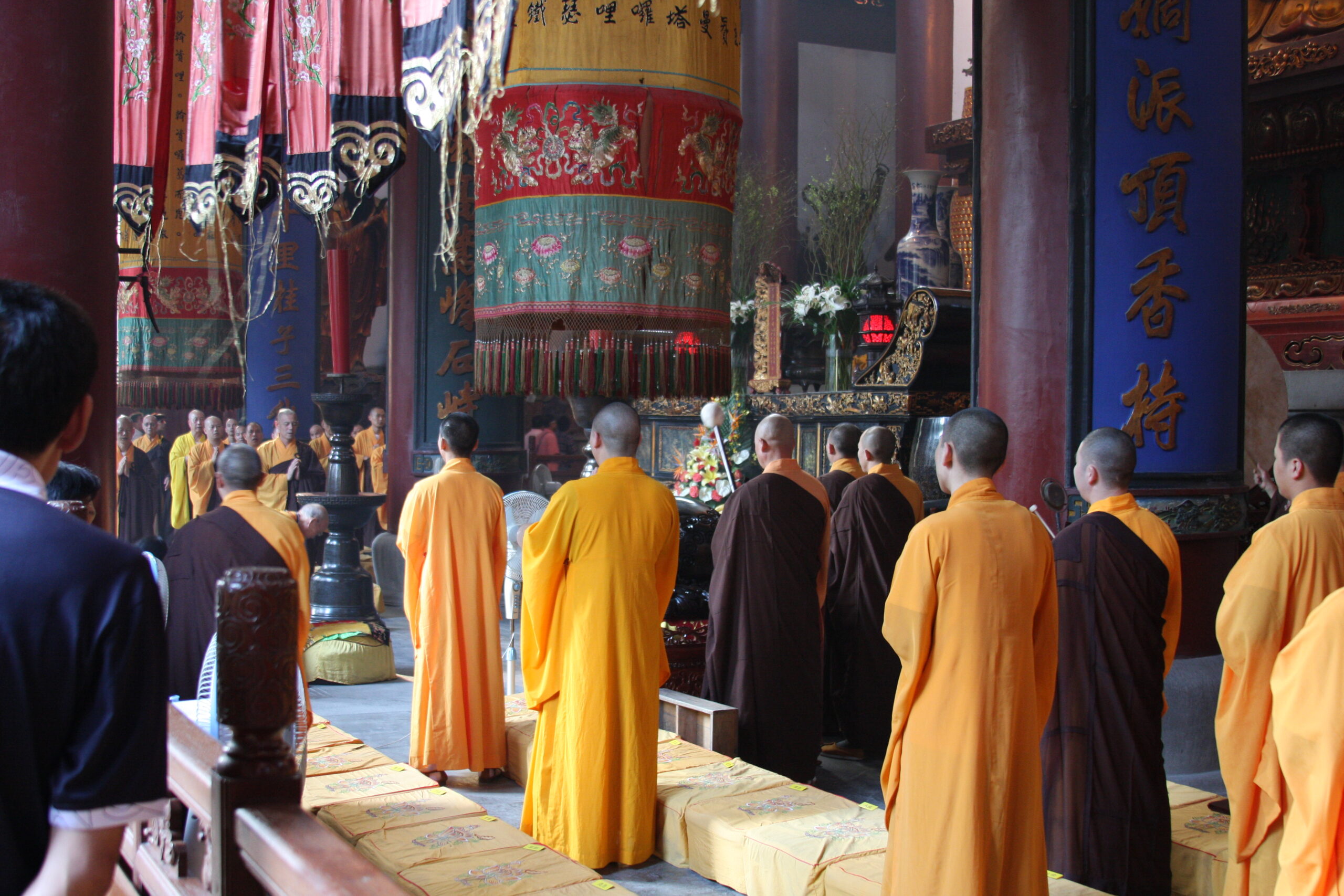
Mahayana Buddhism, the “Great Vehicle,” emphasizes compassion and the aspiration to attain Buddhahood for the benefit of all sentient beings. Monastic life in Mahayana tradition encompasses a broad spectrum of practices and beliefs, reflecting the diversity of Mahayana schools and lineages. While monastic discipline and vinaya rules are observed, Mahayana monasteries also prioritize the cultivation of wisdom and compassion through meditation, ritual, and study. Female practitioners are recognized as equal to male monks in many Mahayana orders, fostering inclusivity and gender equality within monastic communities. Chinese Mahayana monks undergo a distinctive ordination ritual involving burning marks on their scalp or forearm as a symbol of commitment to the path of awakening. Mahayana monastics are dedicated to the bodhisattva ideal, striving to alleviate suffering and awaken others to the true nature of reality.
Vajrayana Buddhism
Vajrayana Buddhism, the “Diamond Vehicle,” emphasizes the direct transmission of esoteric teachings and practices from teacher to student. Monastic life in Vajrayana tradition is characterized by the pursuit of enlightenment through the transformation of ordinary experience into the path of awakening. Monks and nuns take vows as part of a progressive system of ethical discipline, culminating in full ordination as fully ordained monks or nuns. Tibetan monasteries serve as vibrant centers of learning and practice, where monks and nuns engage in intensive meditation, ritual, and study under the guidance of experienced teachers. The Tibetan word for monk, “trapa,” reflects their role as students and scholars, dedicated to the study and propagation of Buddhist philosophy and meditation practices. Vajrayana monastics embody the principles of compassion, wisdom, and skillful means, striving to benefit all beings and realize the ultimate nature of mind.
Zen Buddhism
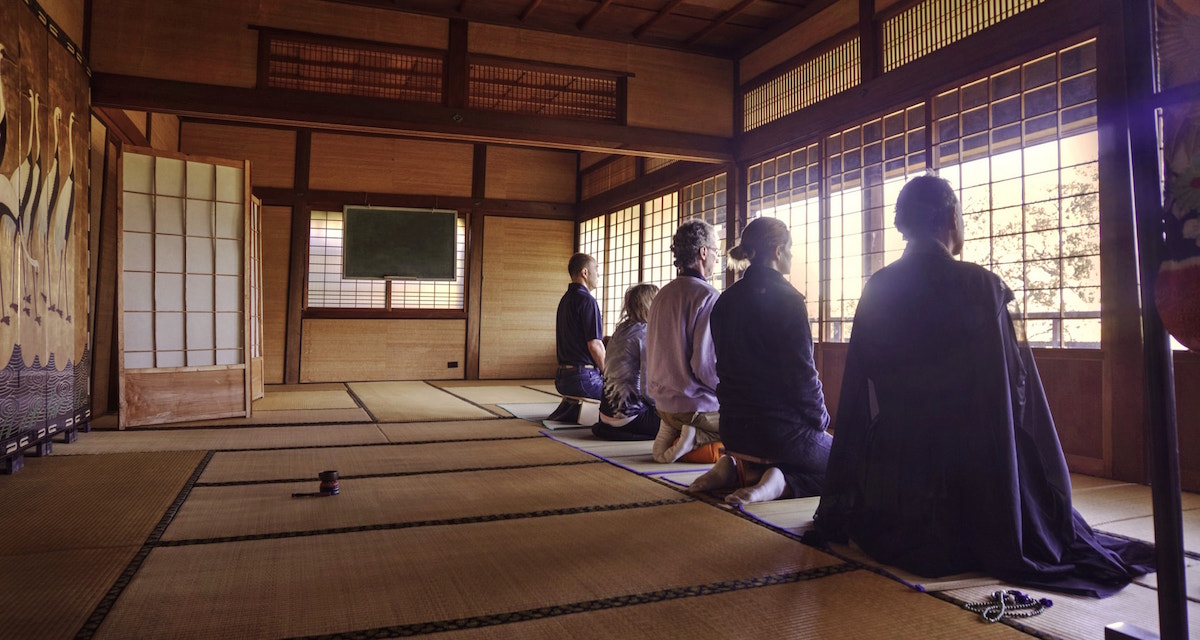
Zen Buddhism, known for its emphasis on direct realization and experiential understanding, places great importance on the practice of meditation and mindfulness in everyday life. Monastic life in Zen tradition revolves around rigorous zazen (meditation) practice, work (samu), and study (teisho). Zen monks and nuns follow a strict daily schedule, beginning before dawn with meditation and chanting. Monasteries, or zendos, provide a supportive environment for practitioners to deepen their understanding of Zen teachings and cultivate mindfulness in every moment. The precepts of Zen Buddhism guide monastic conduct, emphasizing ethical behavior, simplicity, and non-attachment. Zen monastics embody the spirit of awakened awareness, serving as exemplars of presence and compassion in the world.

